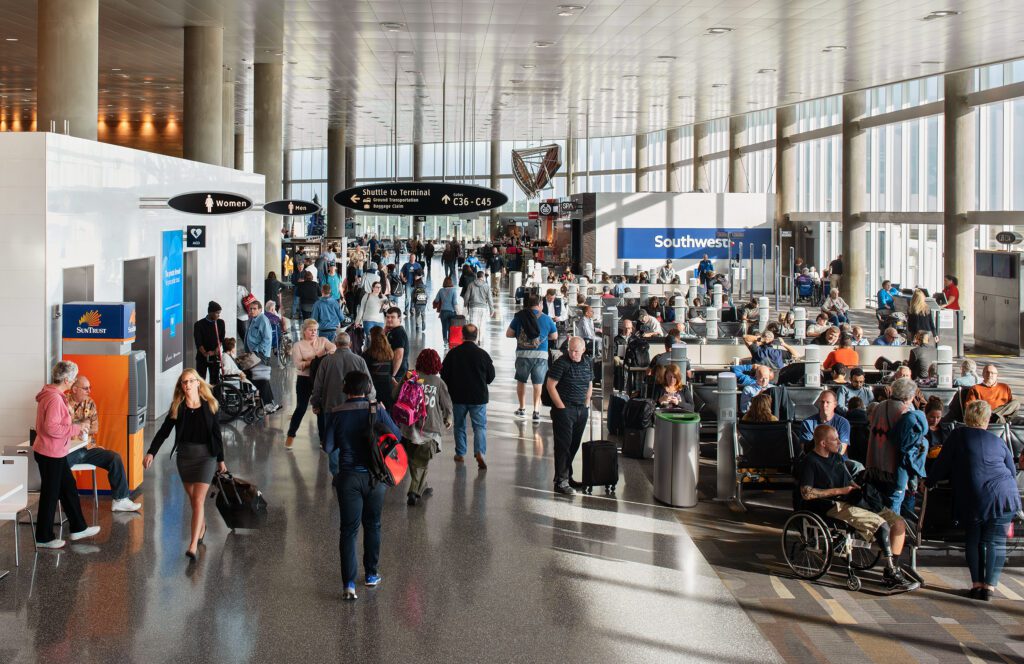
[ad_1]

Skift Take
The European Union’s rule gives a glimpse into how the U.S. may enforce its automatic refunds policy – though there are key differences.
Meghna Maharishi
When the Biden administration announced airlines would be required to automatically refund passengers for significantly delayed or canceled flights, the airline industry claimed there were unanswered questions.
Are airlines 100% responsible for refunds, even if a lengthy delay or cancellation is caused by an air-traffic control issue? What about the weather?
American Airlines CEO Robert Isom said the rule had some “gray” areas. Airlines for America, the largest trade group for major U.S. airlines, took a harsh stance and called the rule “anti-competitive.”
And now, automatic refunds are likely to become a part of U.S. law, after the Senate added a provision for them in its FAA reauthorization bill.
But the European Union passed something similar in 2004, and the rule went into effect in 2005.
The EU’s experience gives clues to how it might go in the U.S., though there are also key differences.
What Is EU261?
The European Union’s Air Passenger Rights Regulation is roughly similar to the DOT’s automatic refunds — but it has some differences. In Europe, airlines must allow passengers to choose between a refund or being booked on an alternative flight.
On top of this, if the disruption was within the airline’s control, or not an “extraordinary circumstance,” passengers can request additional compensation. For example, passengers flying to and from the EU can receive as much as 600 euros, or about $658, for a significantly delayed or canceled flight that is at least 3,500 kilometers, or 2,175 miles under certain scenarios.
The law, also known as EU261, applies to flights within the EU; flights that arrive in the EU that are operated by an EU airline; and flights that depart from the EU, operated by an EU or non-EU airline.
For canceled flights, the EU rule allows passengers the option of a ticket reimbursement and return flight to the airport of departure for any connecting flights.
John Grant, a chief analyst at travel data firm OAG, said the U.S. was following the EU in implementing automatic refunds.
“It levels the playing field a bit, and it also tidies up some of the issues that became noticeable during the pandemic when airlines essentially didn’t want to refund cash because they didn’t have very much cash themselves,” Grant said.
When the EU first implemented rule 261, it was met with similar industry pushback, Grant said.
“Whilst there was concern, I think the more philosophical airlines said, ‘Look, we’ve got to pay it,’” he said. “‘It’s not our money. We’ve not concluded the contract as such. We had a contract to fly the passenger. We didn’t. Therefore, we have to refund them.’”
The U.S. Goes a Step Further Than the EU
Despite the similarities, the DOT’s rule goes a step further. EU261 makes exceptions for “extraordinary circumstances,” which include air-traffic control issues, geopolitical instability, poor weather and security risks.
The DOT told Skift that passengers would be entitled to an automatic refund regardless of the reason. The FAA bill also does not include language on whether airlines would be exempt from issuing automatic refunds due to severe weather or air-traffic control problems.
Blaise Waguespack, a professor at Embry-Riddle University, said certain circumstances outside of an airline’s control, such as Pratt & Whitney engine recalls, could pose problems when it comes to automatic refunds.
“That word ‘automatic’ kind of created concerns I’ll say, in the airline management suites, because it’s like, ‘Wait up, how much of this is really us versus how much is their problems,’” Waguespack said.
So far, the CEOs of American and Frontier both said they didn’t expect the new rule to affect their airlines’ bottom line. Grant said the new DOT rule wouldn’t lead to higher fares to make up for any refunds.
“No, it won’t. Over time, the market is so fiercely competitive,” Grant said. “It can’t afford to start pricing in these types of things on a regular basis.”
Airlines Sector Stock Index Performance Year-to-Date
What am I looking at? The performance of airline sector stocks within the ST200. The index includes companies publicly traded across global markets including network carriers, low-cost carriers, and other related companies.
The Skift Travel 200 (ST200) combines the financial performance of nearly 200 travel companies worth more than a trillion dollars into a single number. See more airlines sector financial performance.
Read the full methodology behind the Skift Travel 200.
[ad_2]